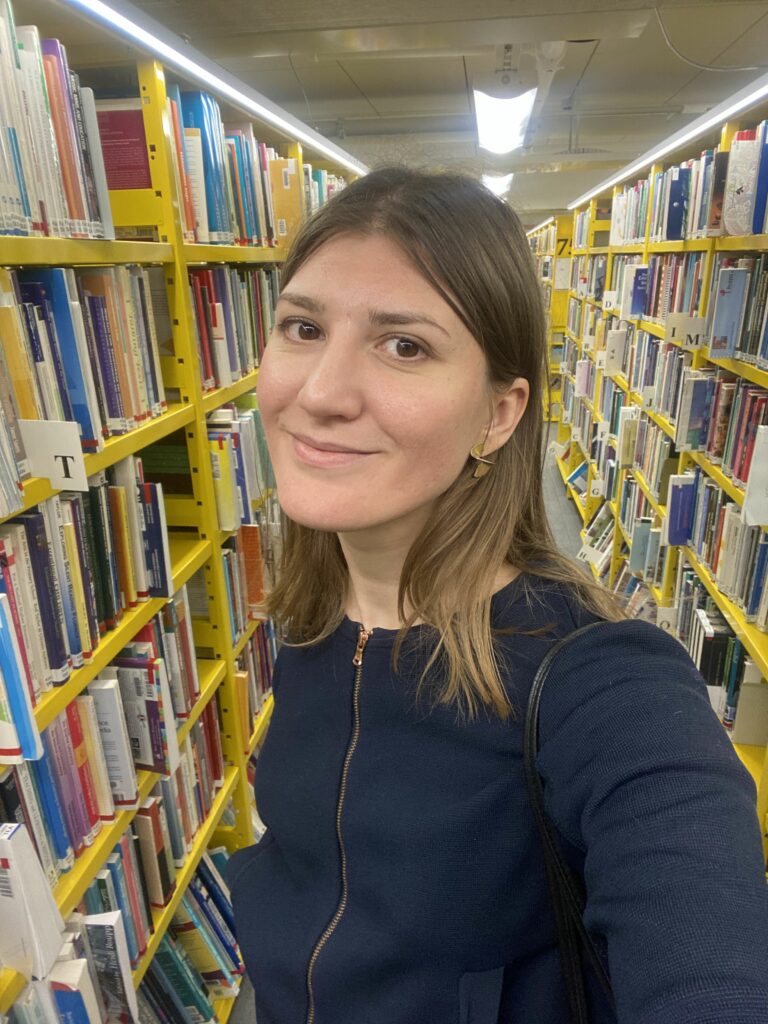
This is me, at the Jyväskylä university library, near my favourite “intercultural education” section. In this blog post, I will blend the professional diary with some pictures and travel notes as I write.
Albina Marchenko, GINTL intern at University of Oulu.
(Re)defining the university’s role: Learning to appreciate the very essence of our work
I have a profound passion for International Education and the process of internationalization. This field continually offers new dimensions to explore with emerging subtopics, research gaps, areas for improvement in practice, and critical theories to apply. My enthusiasm for this field knows no boundaries, and I suspect my GINTL colleagues share a similar attitude. Even though the Lessons Learnt workshop outlined its main themes — future collaboration, internationalization, educational crisis, and ethical concerns — we found it challenging to discuss each in isolation. Everything seems to be so interconnected, reflecting the complexity of the world in which we inhabit and the nature of our work.
Also the city of Jyväskylä itself left me highly inspired by its sites, therefore, I will blend the professional diary with some pictures and travel notes as I write.

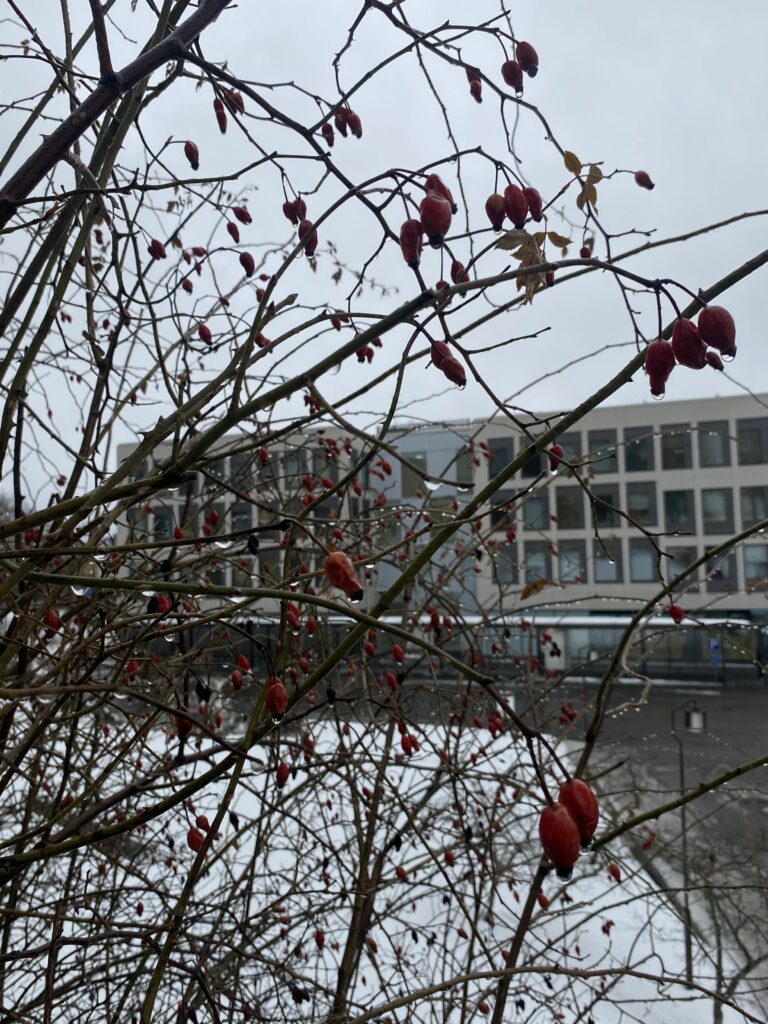
An important part of the Lessons Learned is fostering the self-understanding of HEIs by looking analytically at GINTL activities – what kind of internationalization has been promoted by the different GINTL activities that have been implemented since 2021? [Addition by blog series editor: In its initial period (2021 – 2024), GINTL is built around 20 Finnish HEIs, which have all agreed to invest part of their core funding in collaborations with partners in China, India, and the African continent. Each HEI decides individually how they want to use their GINTL funds. The network coordination – based at Helsinki and Jyväskylä universities – does not have a say over current or future use of funds by HEIs. Through the lessons learnt process, the coordination aims to support the HEIs to reflect on what kinds of internationalisation work is relevant for them and whether it helps being a network of HEIs.]
The workshop included participants from management to project coordinators and interns like myself. Having similar day-to-day activities and tasks, together we found that we speak the same language and understand many complexities that our work involves.
When discussing internationalization, we realized a hidden challenge: our individual definitions and approaches to this process may vastly differ. Amidst discussions about HEIs’ missions, we collectively acknowledged that beyond the multitude of engagements in research on global teaching and learning – celebrated through numerous partnerships, publications and exchanges – what truly resonates is the collaborative process itself. Therefore, while applauding HEIs’ achievements in internationalization, the workshop participants also recognized the invaluable peer-learning and capacity-building that has taken place. As such, this will always be a central component of learning and engaging with global partners.
GINTL activities should become even more open for ALL
In my view, from a higher education institute perspective, openness should firstly mean more activities for all students. In the workshop discussions, I heard a collective concern regarding that even though HEIs have used their GINTL funds to avail opportunities for diverse student groups, there could and should be even more. I felt that among workshop participants there was a strong support for increasing the engagement of students in learning events, exchanges, and internships.
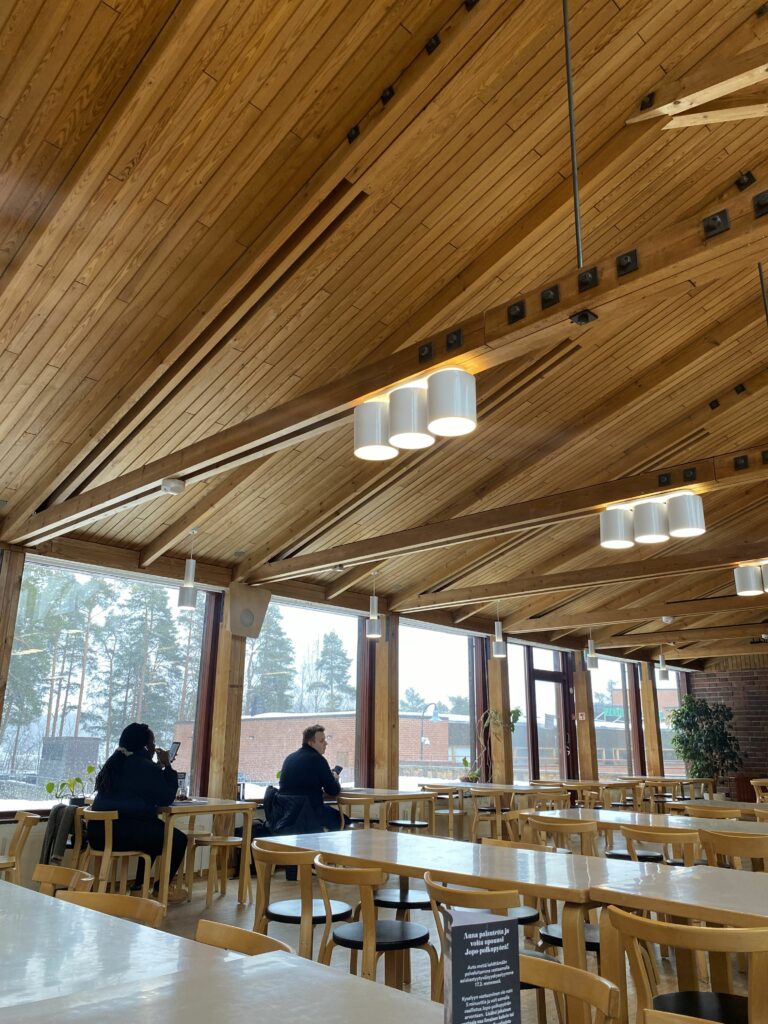
This approach is especially important because GINTL is one of the very few networks that exists in the field of international development and global education in Finland. A coordinated effort is critical to further develop Intercultural education and excellence in educational sciences. Those are increasingly important agendas across the globe in which Finland can contribute even more.
Another aspect of opening more doors is that some doors are just in our neighborhood. Finnish HEIs have worked restlessly to connect with the world, but potential alliances are also available inside of Finland. We have 22 diverse higher education institutions and people working and studying in these can meet each other more to sustain the important dialogues and common growth.
Image: Many of The University of Jyväskylä buildings, like the Philologica building pictured here, were designed by Alvar Aalto. Aalto believed in creating spaces that were accessible and accommodating to all individuals, regardless of their social or economic status. His designs often incorporated elements of inclusivity and egalitarianism, aiming to promote a sense of equality within society through architecture
Defining and addressing educational crisis with more humility
Addressing Educational crisis has been tightly intertwined with most activities HEIs have undertaken with their GINTL funds. Many partnerships have aimed to serve local needs and challenges.
During the workshop, it was discussed that HEIs need to embrace a humble and humane approach to educational crisis. Adopting this kind of an approach would mean that all educational researchers and practitioners in cross-country projects should primarily be led by local communities in deciding what issues need to be addressed. Such a down-to-earth approach opens opportunities for mutual learning and reciprocity.
In other words, many workshop discussions were based on the idea of active listening approach to global learning crisis. I was reminded of the importance of this approach right after the workshop, when I visited the “Embroidered Stances” exhibition at the Craft Museum of Finland, which is based in Jyväskylä. The artists represented there have actively listened to realities and worries, and then captured them in their contemporary embroideries, which are reflections on burning issues as biodiversity, queer rights, global conflicts, etc. I highly recommend visiting it and connecting to artists’ works with open minds and hearts, just as we should connect with the people we work with.
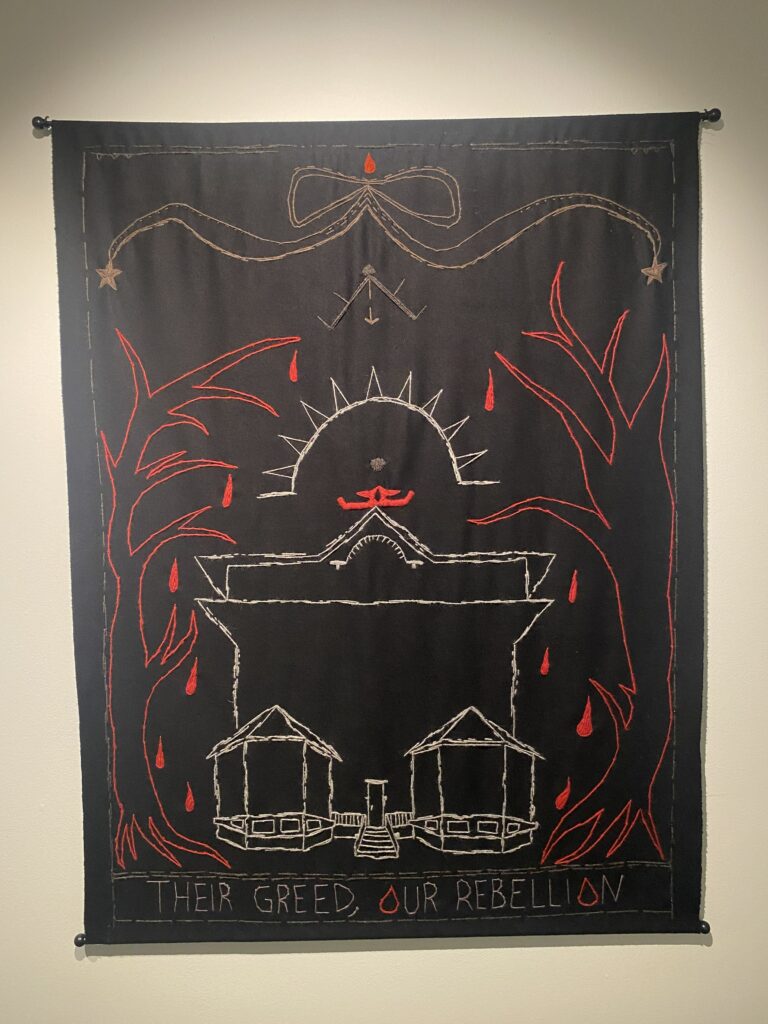
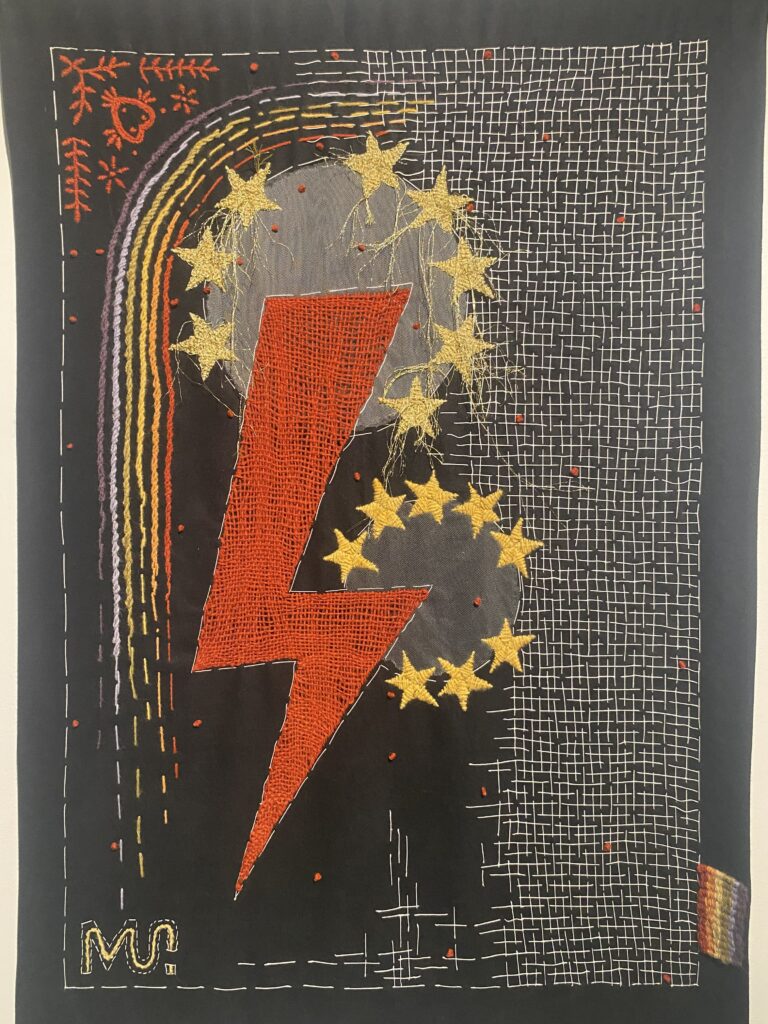

In fact, I am myself a beginner embroidery artist, too. One of my most beloved works is the “Round dance” in which I reflect on critical and decolonial feminism. This scholarly field impacted me profoundly in my learning and I see its overarching meaning in healing the global pain and constructing alternatives with the ethics of care. This ethos leads my way ever since.
Expressing care for international students coming to Finland
In addition to the topics above, one of the concerns that workshop participants collectively expressed was the well-being of international students studying educational sciences, teacher education, and other study fields in Finland. In particular, sometimes conflicting national and institutional interests in relation to international students need to be reconsidered and better aligned together.
Notably, internationalization of higher education and its effects on international students’ well-being is my master’s research project as I approach the graduation from one of the international degree programs in Finland myself. Therefore, based on my findings I advocate for sustaining students’ wellbeing and express hope that all universities and stakeholders can make it their priority. This also entails the necessary difficult discussions on numerous issues such as mutual integration, discrimination, reliability of universities’ marketing etc.
For an extensive representation of my findings on this topic, a reader may want to check out the GINTL research seminar, which will highlight Master’s level research. The seminar will take place on April 25th and I will attend as well.
Image: Internationalization activities should build bridges between international students and the society that has invited them. In this photo, the Ylistö Brdige, which was built in 1991 and connects two different parts of the JYU campus.
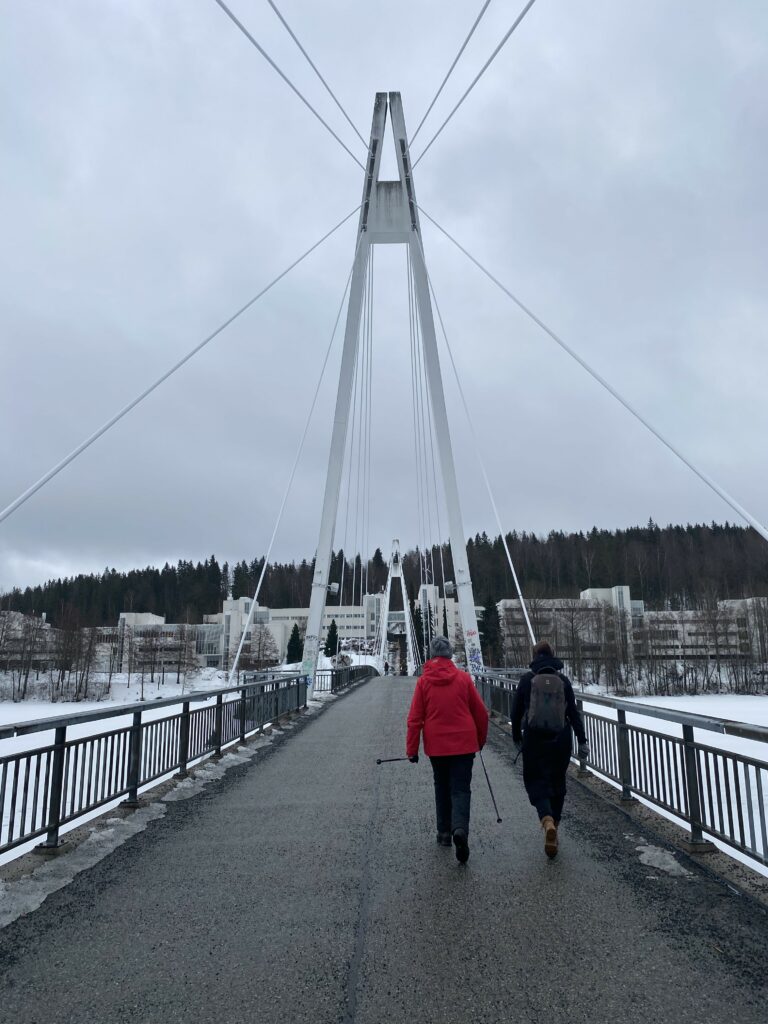
To summarize, while there are many areas of improvement in any work, I wish to express my gratitude to the GINTL coordination team that it remains to be democratic, open for various discussions and dedicated to tackling global learning crisis and meeting students’ needs in Finnish HEIs. That is indeed remarkable, and I am happy to be part of such an organization and thankful for the comprehensive discussion, which was conducted in Jyväskylä.













